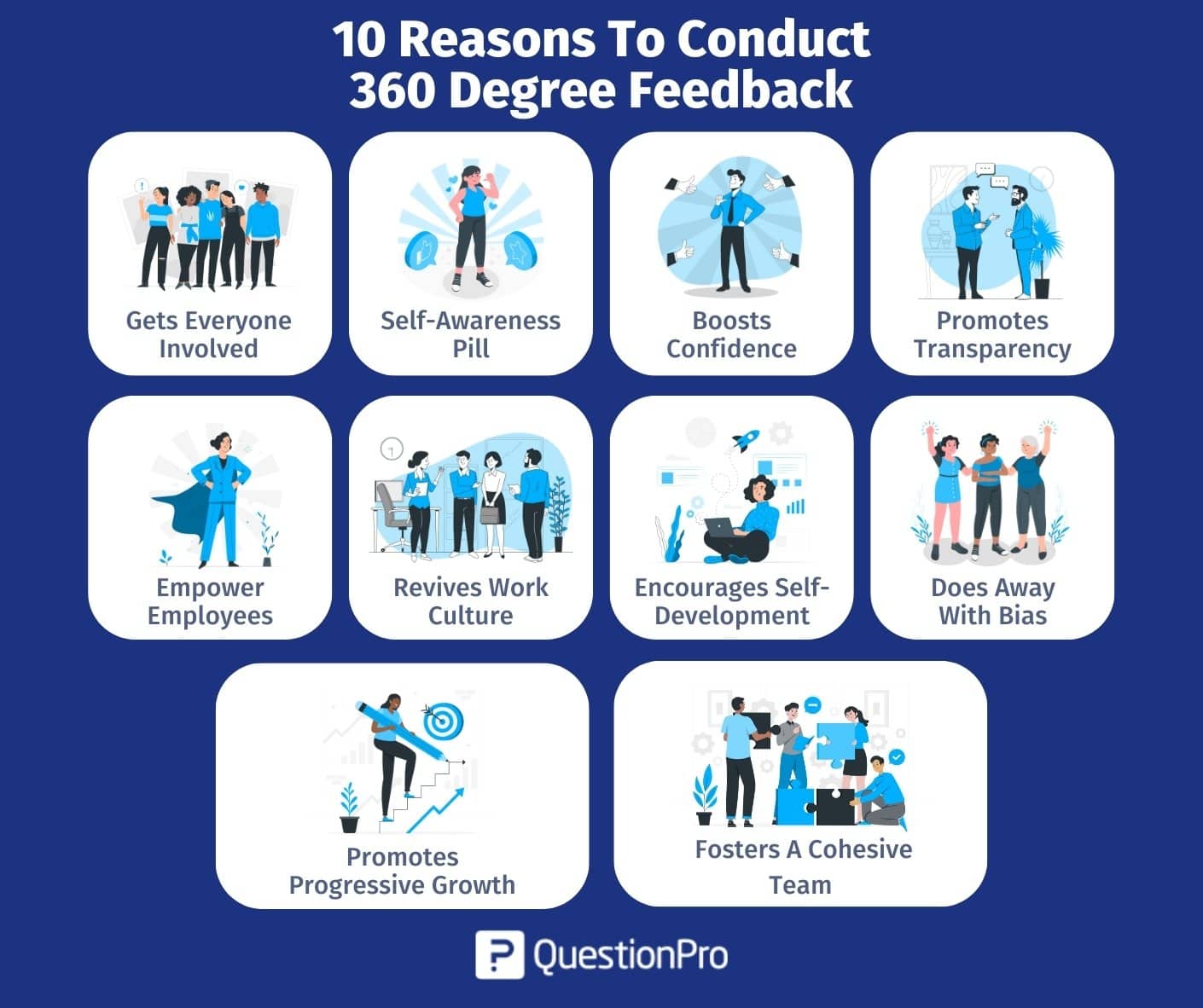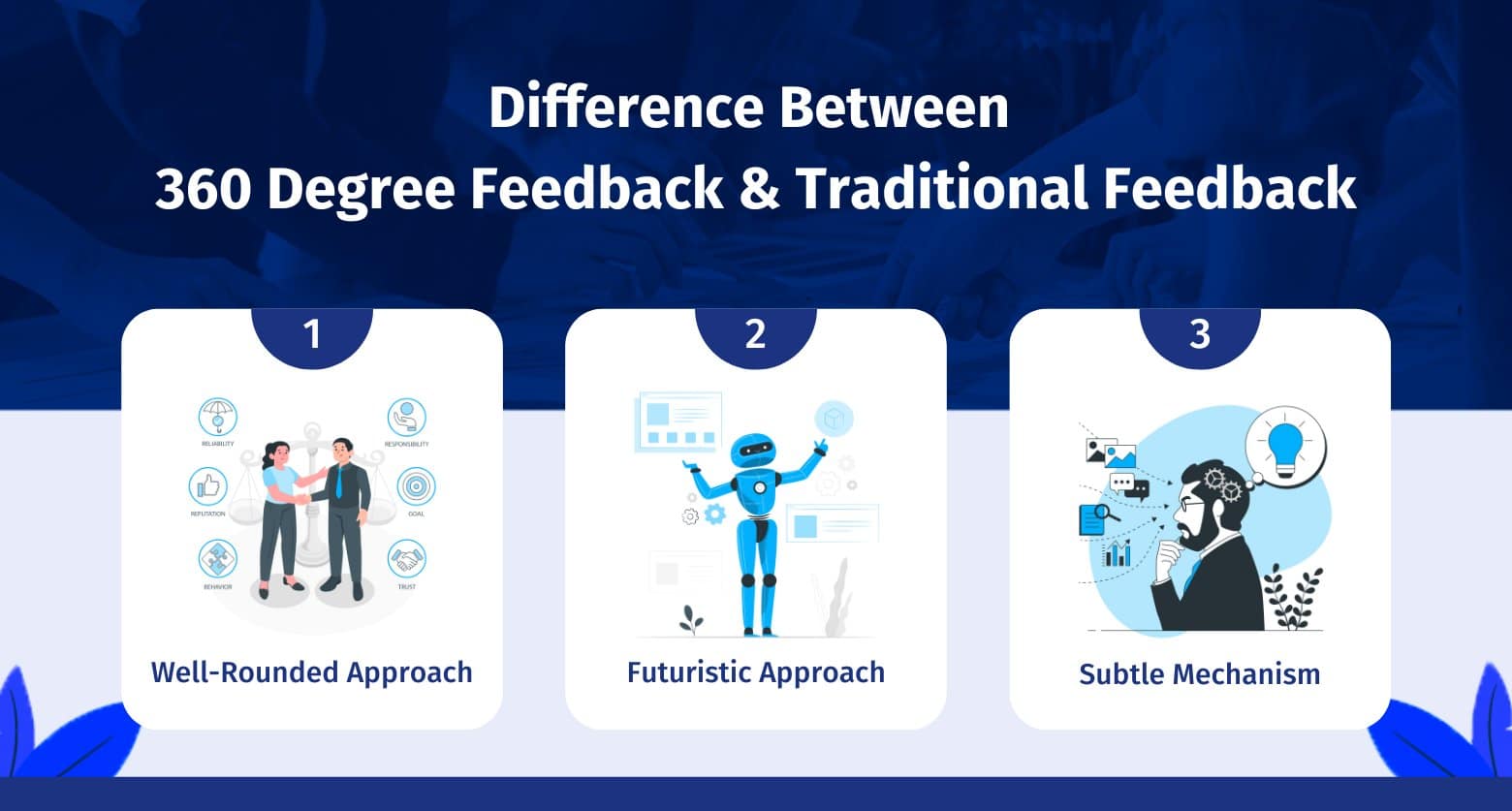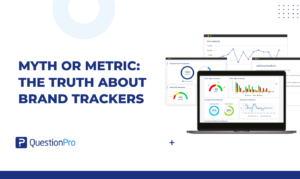
One powerful tool that has gained prominence in recent years is 360 degree feedback. The best way for a leader to understand their strengths and opportunities for improvement is by asking for continuous feedback and advice from their managers, peers, and other stakeholders and seeing how that compares to the self-evaluation.
While feedback is sometimes hard to give, 360 feedback surveys focus on leadership development programs and advice for leaders on improving, removing the stigma of traditional assessments or performance evaluations and focusing more exclusively on improvement.
What is 360 Degree Feedback?
360 degree feedback, or multi-rater feedback, is a performance appraisal and feedback process used in organizations to gather input from various sources about an individual’s skills, competencies, and behaviors in the workplace.
Unlike traditional performance reviews, which typically involve feedback from a single supervisor or manager, 360 degree feedback incorporates feedback from a diverse group of individuals interacting with the person being assessed.
360 Degree Feedback is when employees receive feedback from their peers, manager, or direct reporting authority. The nature of this feedback is confidential. It is a progressive method adopted by many organizations to identify the strengths and weaknesses of the employee and suggest corrective measures to improve employee performance evaluation.
How 360 Degree Feedback Works?
As an anonymous feedback method, managers and peers can fill out online 360 feedback forms that cover a variety of questions on an individual employee. These questions directly or indirectly represent a wide range of workplace proficiencies. The employee receiving the feedback also fills out the same feedback form to analyze their strengths and weaknesses.
360 degree feedback is a fantastic addition to the performance management system and provides employees with constructive feedback. Employees then have a chance to improve their abilities through training and other relevant means. Here’s how it typically works:
1. Identify Participants
The individual being evaluated (the “subject”) selects a group of raters or respondents. These raters include supervisors, peers, subordinates, customers, and even self-assessment. The goal is to collect feedback from multiple perspectives to gain a holistic view of the individual’s performance.
2. Develop a Feedback Instrument
A questionnaire or survey is created with standardized questions or statements that assess various competencies, skills, and behaviors relevant to the individual’s role or objectives. These questions gather specific feedback on communication, leadership, teamwork, problem-solving, and more.
3. Collect Feedback
The selected raters are asked to provide feedback by anonymously responding to the questionnaire. Each rater evaluates the subject’s performance by rating their behaviors or skills on a scale or providing comments, examples, and suggestions.
4. Analyze the Data
Once the feedback is collected, the data is compiled and analyzed. Typically, an HR professional or a trained facilitator processes the responses to ensure confidentiality and to aggregate the results. The feedback is often presented in a report summarizing the strengths and development areas identified by the raters.
5. Feedback Session
The subject receives the feedback report in a one-on-one or group feedback session. This session may be facilitated by a coach or human resources professional to help the individual understand the feedback, identify trends, and create an action plan for improvement.
6. Action Planning
The individual creates a career development plan that outlines specific actions and strategies to address areas of improvement based on the feedback providers’ direct reports. This plan may involve setting goals, seeking training or mentoring, or making behavioral changes.
7. Follow-up
Regular follow-up sessions or check-ins are scheduled to monitor progress and provide ongoing support. This helps ensure that the individual continues to work on their personal development and professional development goals and makes improvements over time.
Empower leaders, drive organizations with 360 feedback
10 Reasons To Conduct 360 Degree Feedback
Here are ten reasons businesses should use 360 degree feedback for employee evaluation and development.

1. Gets Everyone Involved
Getting every team member involved fast-tracks a path to success when achieving the daily goal. It’s important to note that when team members are engaged in their evaluation, it increases the morale of each employee.
We all want to work in a friendly, active, and committed climate to improve results as a team.
2. A Self-Awareness Pill
When we do the same task every day for many hours, sometimes we miss the point of our endeavor. Nonetheless, it is a universal problem that employees face anywhere.
360 degree feedback promotes self-awareness and reminds employees of the strengths they bring to the team.
3. Boosts Confidence
Everyone enjoys a boost in their daily life. The art of building confidence in an individual’s mind is something influential leaders should work towards.
Employee feedback encourages employees to think for themselves. Expressing one’s opinion leads to boosting confidence. Renowned confidence directly impacts work ethic, values, and employees’ accountability in the workplace.
If you want to problem-solve in your office, create people who have the confidence to think up solutions themselves. It’s the best first step to building a freethinking and innovating workforce.
4. Promotes Transparency
There is a direct link between job satisfaction and productivity. When businesses began to take notice, they experimented with the employee experience.
A push for transparency has many merits in startups and medium-sized organizations that believe in innovation as a driving force. Research has consistently proved that hierarchical transparency links directly with employee morale and motivation.
5. Empower Employees
How can employees be empowered to work for their progress and development while also improving the productivity and bottom line of the organization?
360-degree assessment encourages employees to think for themselves and evaluate their performance review. It puts the authority of performance appraisal in their hands, encouraging them to set personal goals that can also help the company.
6. Revives Work Culture From Within
Values and culture are concepts that cannot be forced into an organization. It can only be influenced and encouraged so that its spread is organic.
Openness, inclusivity, positive attitude, employee appreciation, and encouragement are some of the attributes that describe a healthy work culture. Work culture surveys promote self-awareness and make employees feel more accountable for the culture within the workplace.
7. Encourages Self-Development
Whether in the private or professional sphere of an individual’s life, the urge to progress must come from within.
360 degree feedback encourages employees to evaluate themselves and set their own goals. These goals are personal motivators crucial for employees to develop core office values and competencies.
8. Does Away With Bias
The traditional top-down feedback style creates a power gap between employees and leaders. One of the best leadership qualities is to promote respect and motivation while encouraging free thinking.
360 degree feedback is non-threatening and honest. It removes the stigma that employees may feel that a manager’s personal opinions are biasing their performance management and evaluation.
9. Promotes Progressive Growth
Each round of 360 degree feedback offers individuals a perspective of their interaction with teammates and, more importantly – a goal to achieve. Regular 360 degree feedback is conducive to incremental growth. Employees are encouraged to think for themselves and create their own goals.
It’s not just about making more involved employees. You also want to create free-thinking innovators who can prosper for themselves and bring value to the organization.
10. Fosters A Cohesive Team
A team that works well together grows together. When employees with a frequent target share constructive feedback, it helps create a cohesive working unit with a shared commitment to success.
Try Our Free 360 Degree Feedback Survey Template
360 Degree Feedback Questions
360 degree feedback is a valuable tool for assessing an individual’s performance and skills from multiple perspectives, typically including feedback from peers, subordinates, supervisors, and sometimes clients or customers.
The questions used in 360 degree feedback surveys should be carefully crafted to gather meaningful and actionable insights. Here are some common categories of questions to consider:
1. 360 Degree Feedback Questions based on Self Awareness
Employee self-awareness is one of the highest needs for most businesses. Self-aware employees are generally open to suggestions for improving their work because they understand any shortcomings they may have.
These are an essential set of questions to have in your survey. Use these 360 degree feedback sample questions to help determine the self-awareness of employees.
Q-1: Does the employee keep calm even in high-pressure situations?
A: Pressure situations occur daily in the workplace, but handling such a situation is essential. Response to this question will determine the abilities of an employee to deal with pressure.
Q-2: Does the employee use ethical ways of getting their work done?
A: Workplace ethics should always be followed to achieve the desired results. By answering this survey question, an organization can collect responses to understand whether they follow standard work practices.
Q-3: Does the employee exhibit professionalism in the workplace?
A: A professional attitude helps employees perform better, stick to their goals, and achieve more. The response to this question determines an employee’s perspective of their workplace.
Q-4: Does the employee positively take constructive feedback and make efforts to take corrective measures?
A: Feedback is a part of any organization’s culture, but what the employees do with that feedback is essential. The responses to this question can help you determine if employees take performance feedback positively and work to improve based on the feedback given.
LEARN ABOUT: 360 Leadership Assessment
2. 360 Degree Feedback Questions about Employees being Result Oriented
This type of 360 degree feedback gives you a look into whether or not employees are results-driven. It can help you understand your employees’ current level of improved customer service or problem-solving abilities.
Q-5: Does the employee primarily focus on customer needs?
A: In a customer-centric organization, you must pay great attention to how employees interact with the customers. Failure to address customers’ needs contributes to high rates of customer churn. It is an important question that determines the willingness of employees to direct attention to customers’ needs.
Q-6: Does the employee come across as a problem solver?
A: It is important for organizations to know if their employee are problem solvers or are more likely to sit back and wait for someone else to solve issues. Employees taking the initiative to solve problems take their part of the job seriously. Organizations run smoother with many employees willing to pitch in to help solve problems, creating a more efficient workplace.
Q-7: Is the employee a “naysayer”?
A: Use it as a follow-up question to questions on problem-solving. An employee’s negative attitude can cost an organization its most loyal customers and affect the Net Promoter Score. If an employee has negative feedback or outlook on problem-solving or customer service, an attitude issue needs immediate attention.
LEARN ABOUT: Employee Centricity
3. 360 Degree Feedback Questions Based on Teamwork
All employees must be great team players to ensure your organization operates smoothly. Part of 360 Degree Feedback is determining which employees want to strengthen the group and which need help becoming productive team members.
Q-8: When this employee works with coworkers, are they polite while communicating?
A: Effective communication is a key to employee success. Being polite while communicating with teammates puts both employees at ease and increases the chance for positive interaction. It’s an important question in a 360 degree feedback survey if you want to understand how an employee treats their coworkers.
Q-9: Have you experienced any problems with them in recent times?
A: When people with different traits team up, there are bound to be some differences in opinion. However, the team must find common ground when making organizational decisions. If there are issues among team members, address them immediately.
Q-10: How would you recommend that the employee improve their interpersonal skills?
A: Interpersonal skills are the skills that help an individual communicate effectively with others. When working in a team, employees need to work in harmony with others. If there is a need for an employee to work on interpersonal skills, then training should be arranged for it.
Q-11: Is the employee open to constructive feedback?
A: Being open to feedback is a positive trait. Providing feedback helps employees improve the way they work and helps them achieve their goals effectively.
Q-12: Is the employee willing to share resources assigned to them?
A: Resources may be limited to an organization. If an employee is unwilling to share resources, this can affect an organization’s progress.
Check out some 360 Degree Feedback Examples
4. 360 Degree Feedback based on Motivation
Motivated employees are more likely to work efficiently and seek out more complex tasks in the future. Ideally, your workforce is made up of motivated and excited employees.
Q-13: Does the employee appear to be motivated by the tasks at work?
A: A demotivated employee at work needs to spend more resources. Employee motivation is one of the most significant issues faced by organizations across the globe. It’s important to note that a happy and motivated employee is different, though they can often overlap.
Q-14: How does the employee demonstrate that they are motivated and committed to the organization’s success?
A: Action speaks louder than words. Is an employee showing definite signs of motivation at work? These signs demonstrate whether an employee is committed enough to work in the organization.
Q-15: Have you experienced difficulties handling the employee’s motivation level?
A: This question should be asked as a follow-up question to analyze if there are any difficulties a manager or supervisor faces while handling the levels of motivation exhibited by an employee.
LEARN ABOUT: Leadership Assessment Tools
5. 360 Degree Feedback Based on Leadership
Employees demonstrating leadership capabilities can help grow your organization and motivate other workers.
Q-16: Does the employee inspire their co-workers to learn and grow professionally?
A: This question helps you better understand whether or not an employee shows positive leadership qualities. Even employees in non-leadership roles can prove themselves to be capable leaders by encouraging their peers to work hard.
Q-17: Does the employee have the ability to resolve conflicts within the team?
A: Conflict resolution is an essential trait in the workplace. An employee possessing excellent conflict resolution skills is likely to become a good leader in the future.
Q-18: Does the employee take the initiative to solve problems?
A: A leader is a person who takes the initiative without being asked. Use this question to see if an employee stands out for taking action to help solve problems.
Q-19: Does the employee demonstrate motivational skills and help others succeed in day-to-day tasks at work?
A: In the words of Dale Carnegie, “If you can inspire one more person apart from you, you are a winner.” By asking this question in your survey, you better understand which employees inspire other employees to do better.
Q-20: Does the employee provide a conducive environment for other employees?
A: A good leader will know the importance of working in harmony and peace within the organization. A person who manifests these qualities is often considered a good leader.
Explore Employee Feedback Survey Questions
Difference between 360 Degree Feedback and Traditional Feedback
360-degree and traditional feedback are two different approaches to providing feedback and evaluating performance in a professional or organizational setting. Here are the key differences between them:

1. Well-rounded approach
Most traditional review methods involve individual employees getting feedback from their direct reporting authority or manager. 360 degree feedback requires quality input from other additional sources like peers.
2. Futuristic approach
Unlike traditional reviews or feedback, 360 degree feedback has a more futuristic approach, where employees can identify their strengths and weaknesses. They then work on the developmental steps to help them perform better in their workplace.
3. It is a subtle mechanism
360 degree feedback is an ingenious mechanism to identify strengths and weaknesses rather than analyze what the employee does right or wrong. It gives the organization a broader perspective to identify the areas of improvement for their employees.
360 Feedback Platform: Book a Demo
Advantages of 360 Degree Feedback
360 degree feedback is a technique for performance appraisals that includes getting feedback from various people, such as supervisors, peers, subordinates, and occasionally even customers. This approach offers several advantages:
Helps increase self-awareness
This feedback tool helps increase self-awareness within the employees. Since it’s anonymous feedback, honest feedback regarding an employee’s behavior is usually registered. Employees can go through feedback and mark their areas of improvement.
Reduces blind spots
As the name suggests, 360 degree feedback is an overall feedback method that helps analyze strengths and weaknesses. It helps in reducing blind spots and increasing the efficiency of an employee. This feedback is the right way to explore hidden strengths, as it’s not single-directional and helps employees identify their hidden talents.
Helps build confidence
This feedback mechanism helps build trust and increase the morale of the employees and the leaders. Leaders start to feel better about the organization and the people they lead when their efforts are noted. It effectively improves the leaders’ decision-making capacity as the feedback is usually given constructively.
Creates a better workplace culture
Although the process is anonymous, the manager and peers provide feedback directly to the employee and vice versa. It helps reduce animosity towards each other and facilitates a better workplace culture.
Fosters a culture of equality at work
According to a study, only 46% of employees in the U.S. feel they have a voice at work. Through this feedback, employees have an equal advantage in giving feedback to their leaders, managers, or peers. It insists the employees have an equal say in the manager evaluation, and this promotes a culture of equality in the workplace.
It reduces turnover
Many organizations face employee turnover. This damages their market reputation as only a few people want to be employed at a place where employees are considered weak or with a lack of job security. This feedback system allows employees to identify their weaknesses and work to fix them. It helps in increasing the engagement of the employees and their overall job satisfaction.
It’s a continuous improvement process
A 360-degree survey is not a one-time process where feedback is given and forgotten. A regular feedback cycle helps both employees and their leaders improve themselves continuously.
LEARN ABOUT: Behavioral Competency
How QuestionPro Workforce Can Help in Collecting 360 Degree Feedback
Collecting 360 degree feedback is essential for organizations seeking comprehensive insights into leadership effectiveness and overall performance. QuestionPro Workforce offers a robust platform designed to facilitate the collection of 360 degree feedback efficiently and effectively.
- Intuitive Platform: QuestionPro Workforce offers an intuitive and easy-to-use platform for collecting 360 degree feedback. With its user-friendly interface, organizations can streamline the feedback collection process.
- Customizable Assessments: The platform allows organizations to create customized 360-degree assessments tailored to their needs. This flexibility ensures that the feedback collected aligns with the organization’s goals and objectives.
- Comprehensive Feedback: QuestionPro Workforce enables organizations to gather feedback from multiple sources, including peers, subordinates, supervisors, and even external stakeholders. This comprehensive approach provides a well-rounded view of an individual’s performance review and leadership style.
- Automated Processes: The platform automates various aspects of the feedback collection process, such as sending out survey invitations, reminders, and tracking responses. This automation saves time and ensures a smooth and efficient feedback collection process.
- Generative AI Integration: QuestionPro Workforce integrates generative AI technology to enhance the feedback analysis process. This technology helps to interpret open-ended comments more effectively, providing deeper insights into the feedback received.
- Flexible Deployment Options: Whether organizations prefer web-based surveys, mobile surveys, or other distribution methods, QuestionPro Workforce offers flexible deployment options to suit their preferences and ensure maximum participation.
- Dedicated Support: QuestionPro Workforce provides dedicated support to assist organizations throughout the feedback collection process. From survey setup to data analysis, organizations can rely on the platform’s support team for guidance and assistance.
Conclusion
360 degree feedback is a tool that covers most aspects of the behavioral competencies of an employee or their manager or management. It is a system that promotes transparency in the system of feedback and reduces animosity, thereby making it extremely popular amongst organizations.
360 feedback software is much more than a platform to share observations of behaviors. It has the power to help transform the way someone leads the organization. Learn more about our 360 feedback platform and turn feedback into action and impact.
QuestionPro Workforce provides a comprehensive solution for collecting 360 degree feedback, empowering organizations to gather valuable insights into leadership performance and drive organizational improvement. QuestionPro Workforce is the ideal partner for effective feedback-collection initiatives.
Frequently Asked Questions(FAQ’s)
A: 360-degree feedback is a performance appraisal process that gathers input from various sources about an individual’s skills and behaviors in the workplace.
A: It involves collecting feedback from multiple perspectives, including supervisors, peers, subordinates, and sometimes clients, to provide a holistic view of an individual’s performance.
A: It increases self-awareness, reduces blind spots, builds confidence, fosters a better workplace culture, and promotes continuous improvement.
A: Unlike traditional feedback, which typically involves input from a single supervisor, 360-degree feedback incorporates feedback from multiple sources to provide a more comprehensive assessment.
A: Sample questions cover areas such as self-awareness, result orientation, teamwork, motivation, and leadership, designed to gather meaningful insights into an individual’s performance and skills.







